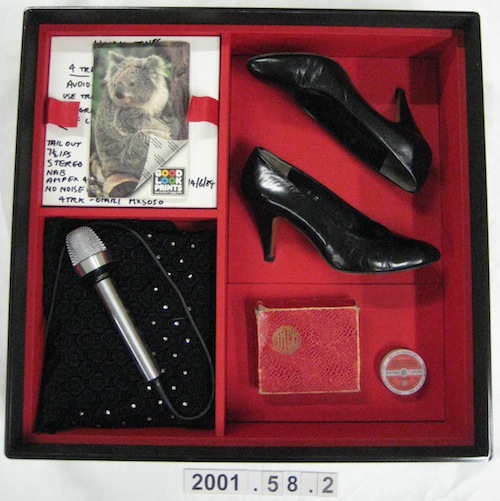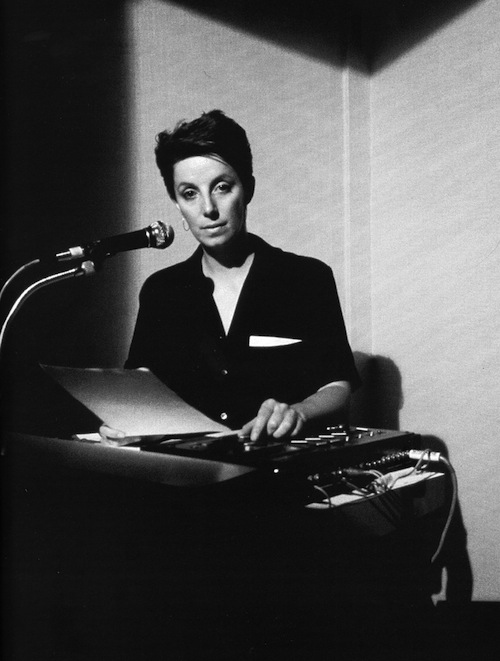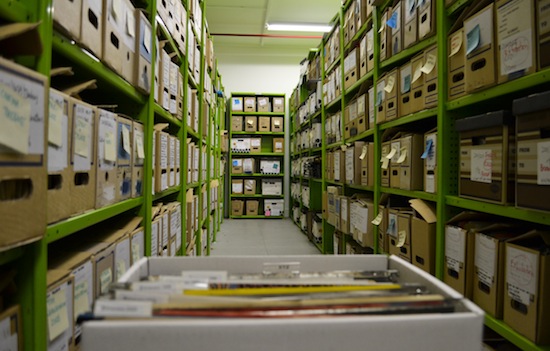Be part of the best party in the arts this weekend as MCA celebrates 25-years; Photo Jacquie Manning, supplied
25 years is a sort of coming of age for a museum. As Elizabeth Ann Macgregor, Director of the Museum of Contemporary Art Australia (MCA) puts it, ‘We’re suddenly grown up.
‘We have moved on from the new kid on the block status and a battler against the odds, and we thank our loyal supporters for sticking with us on that journey.’
On 11-13 November the MCA will throw open its doors and celebrate its 25th anniversary with a three-day celebration – the Museum’s biggest public event to date.
The celebrations will include debates on what the future museum will look like, performances, talks artist, and artist-led tours – including some in the nude thanks to Stuart Ringholt. There will be a spectacular cake designed by Instagram sensation Cakes by Cliff with artists Nicole Barakat and Brook Morgan, a performance by Koomurri Aboriginal dancers and hands-on activities for all ages.
.jpg)
Lauren Brincat and Bree Van Reyk’s No Performance Today (2014); courtesy the artists and MCA
With an expected crowd of 5,000 over the celebrations, it is clear the MCA has entered the affections of many. But like most things, the MCA arose from humble beginnings.
Created out of the foundation gift of the Power Collection from the University of Sydney, and a Quay-side location offered by the NSW Government, the first years of the MCA struggled under entrance fees and on-again-off-again funding support by government.
Macgregor said that when she interviewed for the job in London in 1999, MCA Chair Simon Mordant didn’t mince words about the Museum’s financial situation.
‘It was very different in those early years. We were not able to build a critical mass, and the game changer came in 2000 when we went free. We now had to engage an audience,’ she added.
The vision for the museum was ambitious. ‘Simon wanted a sophisticated outward facing city and he was instrumental in the MCA playing a major role in that.’
As part of the anniversary weekend program, Mordant and Macgregor will have a conversation about the challenges and the highlights in forging an institution that today boasts over a million visitors. Catch it on Saturday, 12 November at 1.30pm.
Confidence in the art
In today’s climate we are conditioned to respond to shifting goal posts, whether as a result of funding, technology or tastes. Getting it right is hard for any institution.
‘There were any number of people who wanted to tell me what to show to make us more popular, but I kept saying that we have to have confidence in the art,’ said Macgregor.
‘You don’t change the art; you change the atmosphere. My philosophy comes from a past as a bus-driving curator. The last thing we want to do is just talk to the art world.
‘It is not about intimidation, but about feeling comfortable in being challenged. This is what we try to do at the MCA,’ said Macgregor.

Lyndal Jones, The Prediction Pieces #7, lacquered wooden box containing props Museum of Contemporary Art, gift of the artist, 2001. Image courtesy and © the artist
Prediction Piece reproduced
Performance artist Lyndal Jones has been forecasting the future for as long as the MCA has been around. Her seminal performance work, The Prediction Pieces, 1981–1991/2016, was shown as part of the MCA’s first wave of exhibitions in 1992. These works address the ways in which we predict and anticipate the future, how we think about it and ways in which we can have agency over it.
Jones will be in Sydney to reproduce Prediction Piece #7 for the anniversary celebrations.
‘I am excited to reshow the work – to look at what might have been then. I am fascinated what people will do with it now. It was my favourite performance ever,’ she told ArtsHub.
For tickets to Jones’ performance click here.
Prediction Piece #7 was first presented in 1984 at a festival for the LA Olympics, and the Edinburgh Festival. It has only ever been presented once in Australia, in Melbourne that same year. By re-enacting this work it places it in the future in which it attempted to predict.
‘It’s like a speech. It is a tough work. There are three 20-minute versions with a tiny break in between. People need to take the journey with me,’ Jones explained.

Lyndal Jones, The Prediction Pieces, Edinburgh Festival version in 1984, Photo by George Cathro
She said the work came out of the need to imagine a future to have a sense of hope.
‘In the early 1980s it was the height of the cold war and the reason I started making the Prediction works is that people did believe a future was possible; they had bomb shelters and kept cyanide tablets with the fear of a nuclear holocaust,’ explained Jones.
Like most of Jones’ work it also comes from a feminist recognition that performance allows the woman to be the subject of the action.
‘At this point in time when we have seen this extraordinary resurgence of performance artists and cross discipline works forging new territory, we return to where it started in 1981 with this performance by Lyndal,’ explained Macgregor.
To recreate the work, Jones has been working with the MCA Archive, which holds the full record of the ten-year series.
‘For many of us who rejected a commercial world this is the only way in which we worked – in an ephemeral way, but nonetheless important at the time. The MCA have done an extraordinary job in keeping that contemporary art archive,’ said Jones.
The Archive will be open to the public as part of the celebrations, in the MCA Library on Level 2.

MCA Archives 201; photo Phoebe Rathmell
Allowing living artists to breathe
Over the weekend celebrations, visitors can also hear MCA Collection artists share memorable stories about the role the MCA has played in their career. Participants will include as Tasmanian photographer Ricky Maynard, Lindy Lee, Todd McMillan, Julie Rrap, Lara Thoms and Justene Williams.
See the program of talks and tours
Jones has appreciated the moment to reflect on her work. ‘The MCA have been very supportive of me and my work over many years. A lot of galleries can’t do that when work is more interdisciplinary and more ephemeral.’
‘What make us unique is our absolute commitment to contemporary art and artists – we haven’t diverted from that original mission,’ said Macgregor.
‘All our educators are artists and that really brings something special to the visitor experience.’
‘That is what makes us unique in Australia – we are really THE institution that collects, exhibits, and interprets contemporary art – and we are seriously public,’ concluded Macgregor
Jones agrees with Macgregor. She thinks that the acceptance of contemporary art has shifted radically in the 25 years that the MCA has been around.
‘The climate has changed. How people see Australian art has changed. And we also have changed,’ concluded Macgregor.
MCA 25th Birthday Weekend
Friday 11 – Sunday 13 November
View the full program and book tickets
This is a free event (some ticketed talks)





